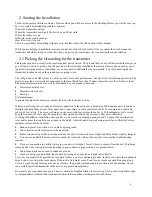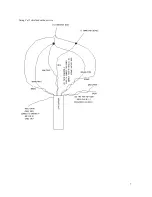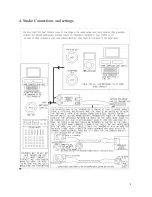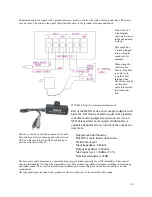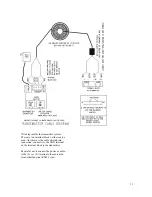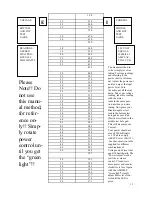
A typical encounter with the FCC would entail just a phone call from them asking for your certifica-
tion number. Most of the time (as long as you are using a certified transmitter) they won’t even come
by to inspect your installation. You don’t want to be using an uncertified transmitter (especially a kit)
if you get a call from the FCC. It is a good idea to broadcast your contact information at least hourly
so that in case the FCC wants to contact you they can easily. Also you can leave a package at the
transmitter site where it can easily be seen containing the certification information, in case the FCC
should visit when no one is present.
When you go on the air with a part 15 do not contact the FCC to let them know of your operation, they
don’t want you to. They have no way to deal with the information. They will find you if they need to.
We have had many contacts through the years with the FCC, if you get a visit just be honest and open,
I have found they are easy to get along with and pleasant unless they feel that you are trying to pull
some sort of trick on them. Like I said before most of the time a site visit shouldn’t be necessary, but
if it is be open and honest, if there is problem honestly present your side. If they want you to change
something to bring you into compliance they will give you a paper describing what needs to be done
and then return in 30 – 60 days to check to see if the change has been done. We have never heard of
one of our transmitters being shut down because of improper installation, the agent has always given
the customer time to fix any issue and has allowed them to continue to operate.
Please be aware that even if your equipment is properly installed and passes an FCC inspection, you
might still be the subject of a complaint from a nearby broadcast station or member of the general
public. Inappropriate or frivolous complaints are filed with the FCC regularly.
RangeMaster may offer advice on how to install a transmitter, but the customer is responsible for rule
compliance.
The FCC is an independent governmental agency, answerable only to congress, we cannot guarantee
and/or we cannot be held responsible for what the FCC may do or decide in any particular situation.
The 3-meter combined length specified in Section 15.219(b) refers to the length of all radiating ele-
ments. Attaching the ground lead to an unshielded radiating object, or the addition of a ground
screen, will cause the effective length of radiating elements to exceed 3 meters, in violation of Sec-
tion 15.219(b).
18
10. Converting from agile module to crystal
Reverting back to the crystal First remove the AM1000F module, remove the two nylon screws and
gently rock the AM1000F to remove it from the socket. You can leave the two nylon standoffs if you want or
they can be removed from the bottom. Install the CD4001 U8 chip being careful to place the notched end
down as shown. Be sure all pins are in the socket. Now you can install the crystal in the Y1 socket area. In
later models you also need to install U10 CD4093.
Summary of Contents for HAMILTON AM1000
Page 7: ...Using Cat 5 shielded outdoor wire 7 ...
Page 8: ...4 Studio Connections and settings 8 ...
Page 14: ...6 Trying to get good Range 14 ...
Page 19: ...19 11 Certification ...

